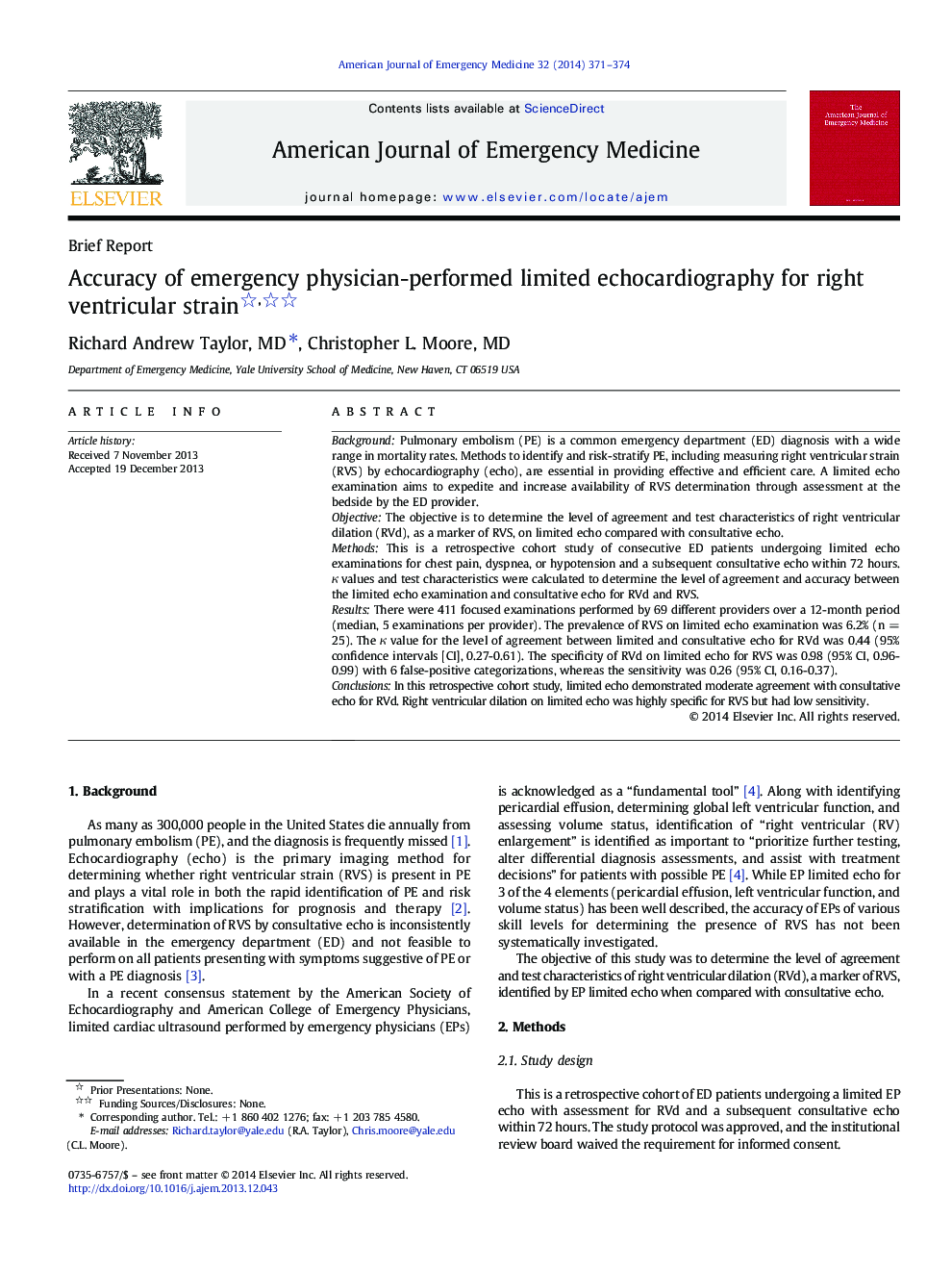| Article ID | Journal | Published Year | Pages | File Type |
|---|---|---|---|---|
| 3223717 | The American Journal of Emergency Medicine | 2014 | 4 Pages |
BackgroundPulmonary embolism (PE) is a common emergency department (ED) diagnosis with a wide range in mortality rates. Methods to identify and risk-stratify PE, including measuring right ventricular strain (RVS) by echocardiography (echo), are essential in providing effective and efficient care. A limited echo examination aims to expedite and increase availability of RVS determination through assessment at the bedside by the ED provider.ObjectiveThe objective is to determine the level of agreement and test characteristics of right ventricular dilation (RVd), as a marker of RVS, on limited echo compared with consultative echo.MethodsThis is a retrospective cohort study of consecutive ED patients undergoing limited echo examinations for chest pain, dyspnea, or hypotension and a subsequent consultative echo within 72 hours. κ values and test characteristics were calculated to determine the level of agreement and accuracy between the limited echo examination and consultative echo for RVd and RVS.ResultsThere were 411 focused examinations performed by 69 different providers over a 12-month period (median, 5 examinations per provider). The prevalence of RVS on limited echo examination was 6.2% (n = 25). The κ value for the level of agreement between limited and consultative echo for RVd was 0.44 (95% confidence intervals [CI], 0.27-0.61). The specificity of RVd on limited echo for RVS was 0.98 (95% CI, 0.96-0.99) with 6 false-positive categorizations, whereas the sensitivity was 0.26 (95% CI, 0.16-0.37).ConclusionsIn this retrospective cohort study, limited echo demonstrated moderate agreement with consultative echo for RVd. Right ventricular dilation on limited echo was highly specific for RVS but had low sensitivity.
